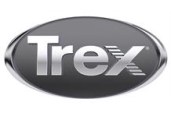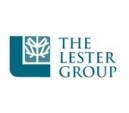Big Builders
Q: Rightly or wrongly, a lot of people that I talk to perceive Stock as having been a company that traditionally was big-builder focused.
A: Yeah, I saw that in your questions and that surprised me. Our largest customer segment was–still is–the custom builder, the regional builder. [Editor’s Note: Stock defines a customer builder as any firm that builds up to 50 homes per year.] They account for the lion’s share of our sales. I will tell you this about the big builders. They have cash. They have land positions, and in the markets they service I expect they’ll recover first. You can’t ignore that segment of the market and not be a successful distributor. But you better have a pretty good cost-to-serve model with those folks.
Choosing Markets
Q; How did you choose the markets you decided to stay in? What were your criteria?
A: I’ll give you a little bit of history, going back to January/February of 2008. Like everyone in the industry, we had been doing labor reductions, trying to get our expense structure right. Kind of as a result of all the acquisitions we had made, our expense base, our SG&A [selling, general and administrative expense] base, was well north of $1 billion. I felt we were just painfully paper cutting the organization with reductions in labor. So we went to the board at the time and asked for approval to do closures. We felt it was the only way we were going to get the expense structure right.
At that time, Wolseley had a view that the closure costs would still be counted against the debt covenant–a position that through the summer and and early fall of ’08 they kind of reversed and said “You’re right,” especially as housing continued to drop. So in October of ’08 we were restructuring based on what we felt were markets that weren’t going to be coming back for a long time. A lot of markets were closed. We really felt at that time that starts this year would be 750,000. By January we realized they’d be 300,000 short of that, and still our expense structure wasn’t right. We knew we had to take more expenses out of corporate. We knew we had more to do. And quite honestly, Wolseley put that on hold (prior to the March 6 announcement).
As we talked to the [potential buyers or investors], we said there’s still more work to do here as far as getting the business cash-positive in what is likely to still be a depressed housing market through 2011 and probably not the same kind of recovery vector that we’ve previously seen. It’s going to be longer and slower. So we knew we had to build that business that could survive that.
We looked at who we were in the market, competitive intensity, and Gores helped us with this and we also brought in McKinsey from the outside to help us evaluate the markets. We looked at competitive intensity, we looked at the history, going back probably 20 years on starts in the markets. We looked at predictions of housing starts from I can’t tell you how many sources. And we asked ourselves, over the next 24-36 months, can we be EBITDA [earnings before interest, taxes, depreciation and amortization] -positive in the market? We made some tough decisions with some markets that we were probably more emotionally tied to. … As painful as it has been, it’s been the right thing to do, based on our view of the housing market.
Financial Prospects
Q: Are there any of the markets, the 19, right now that are EBITDA positive?
A: There are several that are EBITDA positive, and more making progress every month.
Q: If I recall from your Chapter 11 filing, I think it was either late 2011 or 2012 when you thought the whole company would be back in the black. Since then, has your view altered or become more exact?
A: I would say our view is sooner than that.
Q: Well, you thought the market would turn around in 2011. Will Stock as well?
A: I think we’ll be fine before 2011. We feel very confident in the ability of our 19 markets to produce, even in this housing environment that we have today.
Q: I was intrigued, and I think others were intrigued, in your July 1 statement when you came out of Chapter 11. Several times in your statement there were references to financial strength–comparative financial strength (vis-à-vis the competition). What do you know about the rest of the market, how your competitors are doing?
A: Well, you know what all the publicly traded firms are doing, what their balance sheets look like. And that’s really what you base it on. I would think the thing that’s impressed me most with the organization is the resilience and how people have responded. In the 20 years of Wolseley, cash management was not a priority. Occasionally working capital was, but it’s an earnings game that ultimately drives share price. Working capital became an emphasis probably over the last 24 months. But (I’m proud of) the way this organization has responded to freeing up cash, inventory and accounts and receivable. We exited this bankruptcy with a $75 million cash infusion from Gores through their equity contribution, and zero debt. And in the entire time we were in bankruptcy we didn’t borrow one dollar from Wolseley, and we have yet to have to borrow from the $150 million line that we have available through Wells Fargo and Bank of America. So (with regard to) the generation of cash, and keeping money in the bank–the organization’s response has been tremendous. It’s been a tremendous mind change.
Q: If you exited with zero debt, but you don’t think you’re going to be EBITDA-positive this year, and you haven’t borrowed on your credit line, are you just living on an ever-diminishing cash flow?
A: We expect to be EBITDA positive this fiscal year, which ends for us on June 30. Yes, if we weren’t going to be that, it would be an ever-diminishing cycle.
Q: June 30 of 2010? So you’ve also switched fiscal years?
A: [Shakes head yes.] We’ll probably go to a calendar year basis, but we’re measuring ourself on the first year of ownership on a fiscal basis, July 1 to June 30. We’ll actually adopt financial statement recording at the calendar year end, in January.



